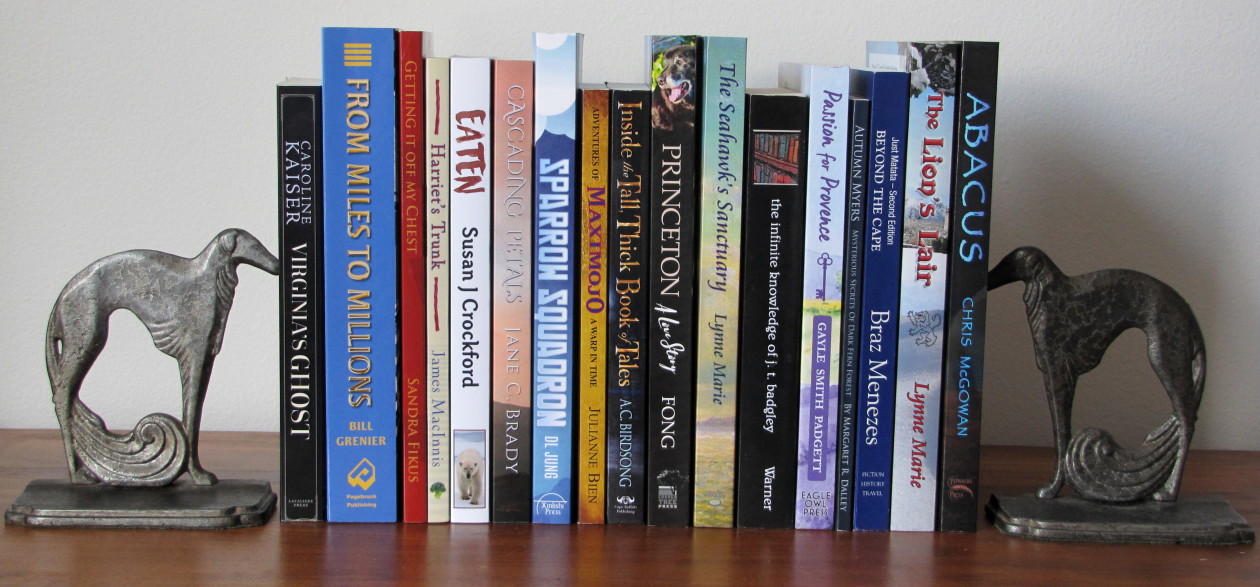I’ve been crafting it off and on for weeks now, and sometimes I lie awake at night, mentally tweaking the wording until it’s just so. It consists of four little paragraphs, a mere two hundred words. But those paragraphs might be the hardest thing I’ve ever written, and every one of those words has to pull its weight. What, you might ask, is causing me such writerly agony? The back-cover blurb for my novel, Virginia’s Ghost.
Logic would dictate that this process shouldn’t be so excruciating. After all, I’ve written or edited blurbs for many clients before, so I know the drill. And no one knows my book better than I do, right? But maybe familiarity is precisely the problem. What’s making the blurb so challenging is knowing my book all too well; I’ve been living and breathing Virginia’s Ghost in all its subtle nuances for quite some time. With so many tiny details about the plot, character, setting, and dialogue filling my brain, I’m finding it tricky to pick out the broad strokes. Here’s my latest effort to whittle the book down to its essence and pull my audience in (and please feel free to criticize, as I still consider the blurb a work in progress).
Antiques specialist Virginia Blythe of Gable & Co. Auctioneers is working late one night when she hears mournful wailing. Following the sound to its source, she gasps in astonishment: a breathtakingly beautiful flapper who looks like a refugee from an F. Scott Fitzgerald novel is lingering in the shadows of the company’s basement.
Later the disconsolate young woman returns to offer Virginia her diary, written in 1928. It reveals she’s the ghost of wealthy Toronto socialite Constance Pendleton. What is Constance trying to tell her? Intrigued, Virginia curls up with the diary and begins dipping her toes into the elegant opulence of Constance’s Jazz Age world.
But suddenly things go terribly awry at Gable & Co. Just as Virginia’s preparing for a blockbuster auction, some valuable porcelain mysteriously goes missing and her job is on the line. The worst, however, is yet to come. A shocking murder spins the eccentric world of the auction house into chaos. Struggling to make sense of it all, Virginia turns increasingly to the secrets of the diary.
Virginia’s Ghost is a tale of ghastly crime, euphoric love, and devastating betrayal in which two women transcend time to affect each other’s lives in startling ways.
Apart from discovering that writing your back-cover blurb is damn difficult to pull off, what else have I learned? Here’s my advice, based both on my experiences helping clients with their blurbs and writing my own.
First, get as much critical feedback throughout the blurb-writing process as you possibly can. People who have already read your book (e.g., your editor) are invaluable and can help you answer some key questions. For example, does the book actually deliver what you promise the reader in your blurb? If you’re describing thrills and chills aplenty on the back cover but your book’s more of a meditative literary piece, then you have a serious mismatch on your hands. As well, does the tone of the blurb match your book’s tone? Obviously, it should, and only someone who’s read your book will know. But people who haven’t read it can also be enormously helpful in answering the big questions: Would you read this book? And if not, why not? Take every bit of feedback you receive to heart and keep revising your blurb until you’re hitting all the right notes.
Second, use language that will hook readers emotionally. What will grab them enough to make them want to read your book? If you’re not sure, think about who your readers are–their tastes, interests, and values. Chances are you’re like me and you’re writing for the very club you’re already a member of, which makes it much easier to know what your audience wants. I expect my readers to be largely 40+ women who are fans of the cosy mystery genre and period pieces. Because of this, I’ve tried to heighten the mood of mystery and intrigue and have emphasized the past by playing up the flapper ghost and the auction house setting. And I hope that the image of Virginia curling up to read the diary will strike a chord with my readers, who probably enjoy spending their Sunday afternoons with a cup of tea and a good book. Consider what’s important to your audience and use language and images that truly speak to them.
Finally, make every word count. Most blurbs aren’t much more than about 250 words, so you’ve got to be economical in your prose and focus on what’s really important–namely, some enticingly described story details that will leave your readers wanting to know more and eager to buy your book. Now’s not the time to blather on using wordy or vague language, pat yourself on the back for your brilliant book, or give too much of your plot away. Remember that your blurb isn’t a synopsis but a teaser that functions as your primary marketing tool. You’ll be using it on the back of your book and elsewhere too–on your website, Facebook author page, and Amazon, for example. It’s worth your while to take your time and do it right.

 Follow
Follow